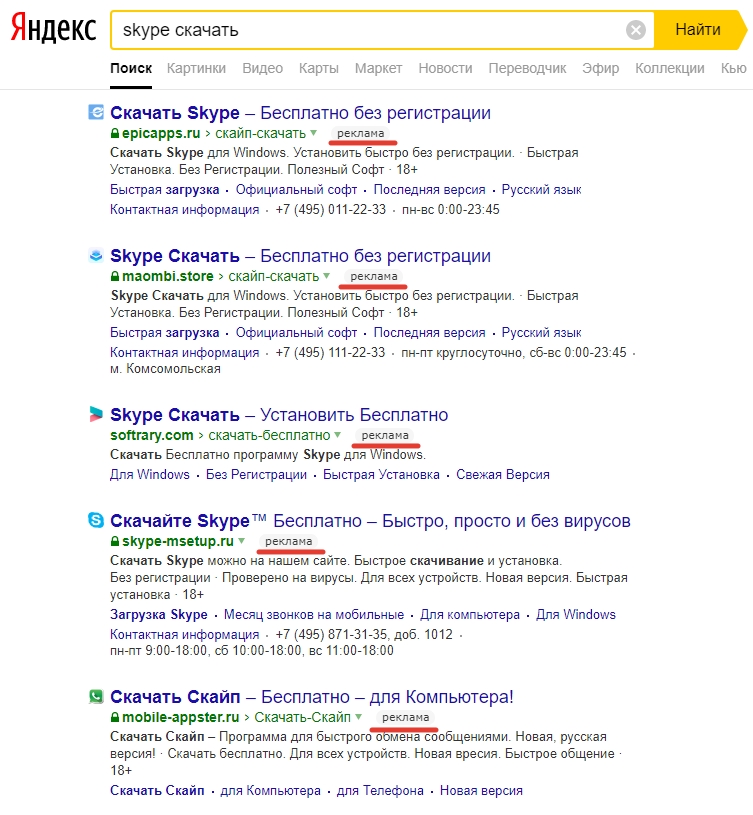Тинькофф дает противоречащие ответы Роскомнадзору и ЦБ РФ в части дачи клиентом согласия на обработку его биометрии

В ответ на статьи «Тинькофф-банк» собирает согласие на обработку биометрии клиентов при вводе пин-кода в новом приложении или банкомате и Сделаем для вас биометрию. Отказаться не получится хотел бы добавить интересные новости о том, как «Тинькофф» дает противоречащие ответы Роскомнадзору и ЦБ РФ в части дачи клиентом согласия на обработку его биометрии.
Процедурный генератор хрущёвок
 Сидел я как-то дома, читал статью про хрущёвки и восторгался гением архитектора. Потом меня отпустило, и я подумал, что унылость и однообразие хрущёвок очень легко можно описать математически. Прямые углы, равные интервалы, минимум украшений — что может быть проще?
Сидел я как-то дома, читал статью про хрущёвки и восторгался гением архитектора. Потом меня отпустило, и я подумал, что унылость и однообразие хрущёвок очень легко можно описать математически. Прямые углы, равные интервалы, минимум украшений — что может быть проще?На самом деле, у хрущёвок существует несколько десятков модификаций, но некая основа, сущность хрущёвки всё равно прослеживается.
В общем, недолго думая, я сел и написал генератор хрущёвок на C# под Unity3d. Под катом описание работы алгоритма и размышления на тему uv-карт, сабмешей и шейдеров.
Как закрыть Интернет в России
- Проект развития мультисервисных сетей в России на ближайшие годы, усилиями Минкомсвязи: minsvyaz.ru/ru/discussions/index.php?id=41
- Разбор и обсуждение оного с эвфимизмами в отношении существующих телекомов: www.kipchatov.ru/blog/?p=1151 (очень рекомендуется к прочтению)
Для скучающего читателя выписываю самую жаренную часть.
По планам минкомсвязи ожидается изменение провайдерского рынка — все операторы делятся на «федеральных операторов связи» и
При этом:
«просто операторам связи» запрещается трансграничная передача данных. Этим должны, будут и могут заниматься только федеральные операторы связи.
Самим федеральным операторам связи ставится в обязательство присутствовать на всей территории страны, причём год от года требования по присутствию увеличиваются — к 2014 это города с 100к населения, а к 2018 — с 8к (да-да, в каждый заполярный город оптику). Таким образом стать ФОС сможет только Очень Очень Очень толстый оператор. И у него будет монополия на иностранный трафик.
Тарифы для подключения операторов, разумеется, демократические, регулируемые регулятором (который изо всех сил начинает сдерживать внезапно образовавшегося монополиста/монополистов).
Как развитие алгоритмов сжатия остановилось 20 лет назад, или о новом конкурсе на 200 тысяч евро

В октябре прошлого года я опубликовал статью «О талантах, деньгах и алгоритмах сжатия данных», где с юмором описал, как «изобретают» новые алгоритмы сжатия люди, не имеющие достаточно навыков для реализации своих идей. А заодно рассказал про существующие конкурсы по новым алгоритмам, в том числе двигавшийся тогда к завершению конкурс алгоритмов сжатия с призовым фондом 50 тысяч евро.
Пост набрал 206 «плюсов», вышел на 2 место топа недели и вызвал оживленную дискуссию, в которой мне больше всего понравился комментарий: «Коммерческого интереса эффективность по сжатию алгоритмов сжатия без потерь сегодня не представляет, в силу отсутствия принципиально более эффективных алгоритмов. Деньги сегодня — в сжатии аудио-видео. И там и алгоритмы другие. Тема сжатия без потерь удобна именно лёгкостью верификации алгоритма, и не слегка устарела. Лет на 20.»
Поскольку я сам уже 20 лет в области сжатия видео, с ее бурным развитием мне спорить сложно. А вот что сжатие без потерь развиваться перестало… Хотя логика тут понятна каждому. Я до сих пор пользуюсь ZIP, все мои друзья пользуются ZIP с 1989 года — значит, ничего нового не появляется. Так ведь? Похоже рассуждают сторонники плоской земли. ))) Я не видел, знакомые не видели, и даже некоторые авторитеты утверждают, значит, это так!
О том, как Intel просили меня не прекращать читать курс по сжатию, ибо людей нет новые алгоритмы делать, я в прошлый раз писал. Но тут и Huawei в ту же дуду дует! Вместо того, чтобы раздать призы
Развивались ли алгоритмы сжатия без потерь в последние 20 лет? Чем закончился прошлый конкурс и на сколько опередили baseline? Сколько денег получили русские таланты, а сколько зарубежные? И есть ли вообще жизнь
Кому интересно — добро пожаловать под кат!
Как нам удалось прочитать рукопись, найденную в 80-х возле третьего крематория в Аушвице-Биркенау
Меня заинтересовал момент: каким же образом выглядит процесс перевода военных документов, насколько качественно они были оцифрованы, все ли было сделано для того, чтобы не ломать глаза переводчику. Когда я получил на анализ копии оцифрованных документов, я был удивлен нераскрытым потенциалом одной их них – Марселя Наджари. Ее часть в «свитках из пепла» занимала совсем малую главу, через несколько лет эта история раскрутилась до публикаций в мировых СМИ. Она интересна так же, как и страшна.

Чем заняться айтишнику в армии или как я на VBA игры писал
 Прошло уже больше двух месяцев с момента моей демобилизации. Я уже освоился на свободе, пришло время рассказать интересную историю со службы. Служил я в разведке!.. По распределению попал в центр радиоперехвата. Работенка не пыльная, сидишь ночами в наушниках и слушаешь врага. Но речь пойдет не об этом.
Прошло уже больше двух месяцев с момента моей демобилизации. Я уже освоился на свободе, пришло время рассказать интересную историю со службы. Служил я в разведке!.. По распределению попал в центр радиоперехвата. Работенка не пыльная, сидишь ночами в наушниках и слушаешь врага. Но речь пойдет не об этом.У каждого оператора поста радиоперехвата (таковыми мы числились) был в распоряжении компьютер с подключенными к нему радио-приемными устройствами. На компьютере стоял спецсофт + Excel. Все остальное было заблочено. После N-ного дежурства я стал скучать… Зачесались руки.
Отладка самолета? Это очень просто!
Главный секрет успеха языков программирования
Давным-давно, мне попадалась статья, в которой автор, рассматривая и сравнивая разные языки программирования, обнаружил одну удивительную закономерность и случайно открыл главный секрет популярности любого языка.
Исходную статью найти я не смог, но захотелось перепроверить факты из той статьи и я был удивлен тем, что я обнаружил! Не могу держать это в тайне, нельзя допустить, чтобы такое важное знание было утеряно!
Что делать, когда преследует бывший… работодатель?

Syn ack, Хабр!
Наверное, все мы в детстве ждали Нового Года! Некоторые из нас помнят то самое новогоднее настроение и предчувствие праздника, но с возрастом оно куда-то уходит, и праздники превращаются в выходные. Новогоднего чуда не ждешь - просто планируешь, как провести свободное время с пользой для себя и семьи.
В преддверии 2022 года я сидел и не думал о Новом Годе, тем не менее, новогоднее чудо со мной все же случилось - ко мне на работу пришел настоящий Дед Мороз (с бородой)! Только в мешке у него были не подарки, а проблемы, которые он надеялся мне доставить. Сначала, дойдя до моего руководства, он пытался очернить мою репутацию, а затем встретился и со мной - этот Дед Мороз не хотел слушать от меня стихи, он хотел, чтобы я наконец удалил статью, написанную почти полгода назад. С тех пор её настойчиво просят удалить неизвестные мне личности.
В этой ситуации может оказаться любой из нас, особенно это касается авторов статей на хабре. Давайте разберемся, что же произошло, а самое главное, что же делать в таких ситуациях.
Anonymous обрушили серверы с детской порнографией
 Нет нужды напоминать уважаемой аудитории Хабра об известной хакерской группе Anonymous — они упоминались в довольно большом числе топиков; например, в контексте того, что группа смогла добраться до секретных документов НАТО и обещании «уничтожить» Facebook. Тогда характер новостей о Anonymus носил преимущественно скандальный характер, однако теперь мнение об этих хакерах придется, как минимум, изменить.
Нет нужды напоминать уважаемой аудитории Хабра об известной хакерской группе Anonymous — они упоминались в довольно большом числе топиков; например, в контексте того, что группа смогла добраться до секретных документов НАТО и обещании «уничтожить» Facebook. Тогда характер новостей о Anonymus носил преимущественно скандальный характер, однако теперь мнение об этих хакерах придется, как минимум, изменить.Около недели назад Anonymus обнаружили некий сайт Hidden Wiki, содержащий ссылки на сотни ресурсов с детской порнографией, которые были недоступны для поисковых машин и пользовались услугами хостера Freedom Hosting. Дальнейшие действия группы лучше всего описать их собственными словами:
Положив сервера Freedom Hosting, мы удалили более 40 сайтов с детской порнографией, среди которых был Lolita City — один из крупнейших сайтов, содержащий более 100 Гб детской порнографии. Мы продолжим обрушение не только Freedom Hosting, но и любой другой сервер, который будет замечен нами в распространении детской порнографии.
Жаргон программистов
Египетские операторные скобки
if (a == b) {<br> printf("hello");<br>}<br><br>
Ближайшие события
Вы точно хотите пойти программистом в gamedev?

Хочу вас огорчить, программисты не делают игры - их делают дизайнеры и арт. Можно уволить программиста и на его место придет другой и через условные месяц-два-полгода начнет закрывать таски не хуже. Если увольняется дизайнер, его монстр, пушка или контент повисает без хозяина и без "видения". Если её не перехватил сосед (а у соседа свой монстр), то в большинстве случаев его работа просто уходит в стол и монстра пишут заново на тех же ассетах и принципах, но заново.
Если увольняется арт-директор, который несет "видение" проекта, то проекту становится очень плохо, в большинстве случаев визуально он изменится до неузнаваемости, хотя ассеты могут быть те же самые. Программисты делают всё, кроме самой игры: рендер, звук, физику, сеть, AI, инверсную кинематику, поиск пути и т.д. Можем подискутировать в комментариях.
Разработка на скорости 450 слов в минуту

Это всего лишь я, и мои коллеги гарантируют вам, что я обычно не опасен. Я программист в офисе компании Vincit в Тампере (Финляндия). И ещё я слепой. В этой статье хочу немного рассказать, как я работаю.
Чтобы распознавать картинки, не нужно распознавать картинки

Это совершенно обычная фотография, найденная в Гугле по запросу «железная дорога». И сама дорога тоже ничем особенным не отличается.
Что будет, если убрать это фото и попросить вас нарисовать железную дорогу по памяти?
Если вы ребенок лет семи, и никогда раньше не учились рисовать, то очень может быть, что у вас получится что-то такое:
История одного «очень китайского» телефона

Путь от “несвяти с сетей” и “спаритьБлютуф” до человеческого телефона
Мы все совершаем глупые поступки. Мы часто сталкиваемся с ситуациями, когда то, что оказывается у нас в руках, является совсем не тем, что мы надеялись получить. Иногда, желание сэкономить позволяет нам приобрести совершенно немыслимые вещи.
Скупой платит дважды...
Так было и со мной, когда примерно два года назад я увидел на очередном китайском сайте смартфон с gps, usb-host’ом, двумя камерами и прочими плюшками за смешные деньги. В тот момент, само словосочетание “китайский телефон” должно было остановить меня, но я уже вписывал пароль от PayPal и скоро эта “прелесть” попала мне в руки…
о1: почему новая GPT от OpenAI — это не хайп, а переход к новой парадигме в ИИ

Последние пару лет развитие языковых нейросетей как будто бы шло по принципу «больше, длиннее, жирнее»: разработчики пытались раздуть свои модели на как можно большее число параметров и прогнать через них максимальный объем тренировочных данных. 12 сентября OpenAI выпустили новую LLM, которая добавляет в это уравнение еще одно измерение для прокачки: теперь можно масштабировать объем «мыслей», который модель будет тратить в процессе своей работы. В этой статье мы разберемся, чему научилась новая GPT o1, и как это повлияет на дальнейшую эволюцию ИИ.
Вас забанила нейросеть: как новый алгоритм Яндекса постепенно выкидывает из поиска региональные СМИ

Пару недель назад я совершенно случайно обнаружил в Яндекс Вебмастере плашку о фатальной ошибке. Там было написано, что мой сайт может угрожать безопасности пользователя, или на нём были обнаружены нарушения правил поисковой системы. Других ошибок не было: индекс качества даже немного подрос.
Удивительно было, что этот сайт — известное в регионе СМИ, и вопросов к нему со стороны Яндекса не было все восемь лет его существования. Потому что мы и на самом деле нарушениями правил поисковиков не занимаемся. Но сначала я, конечно, подумал, что проблема в нас самих — где‑то спрятался баг или, того хуже, взломали. Однако всё оказалось куда интереснее.
Дело оказалось в новом алгоритме Яндекса, который теперь буквально запрещает писать новости. В нашей области он уже забанил примерно треть независимых региональных СМИ. Причём под удар, на удивление, попали одни из самых качественных. Поэтому я считаю, что проблема здесь не столько в сайтах, сколько в самом алгоритме, создатели которого придумали хорошую идею по борьбе за уникальность контента, но не до конца её протестировали. Почему я пришёл к такому выводу и что конкретно с алгоритмом не так, я здесь и расскажу.
На КПДВ: «Региональный журналист пишет новость» глазами другой нейросети Яндекса — «Шедеврум».
Яндекс помогает распространять вредоносное ПО?

Хабы
Вклад авторов
alizar 95150.8marks 24166.6ru_vds 23260.7alexzfort 14179.0ptsecurity 11172.3XaocCPS 10986.2pronskiy 10649.4m1rko 10382.0ph_piter 10280.5Andrey2008 9931.2










